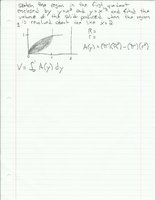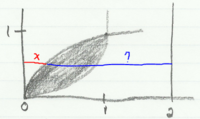Hckyplayer8
Full Member
- Joined
- Jun 9, 2019
- Messages
- 269
Sketch the region in the first quadrant enclosed by y =x^3 and y = x^1/3 and find the volume of the solid produced when that region is revolved about the line x = 2.
I sketched and shaded the region. This question doesn't make much sense to me because x=2 is outside the bounded area of [0,1].
Would I just add 1 to my functions?
I sketched and shaded the region. This question doesn't make much sense to me because x=2 is outside the bounded area of [0,1].
Would I just add 1 to my functions?


